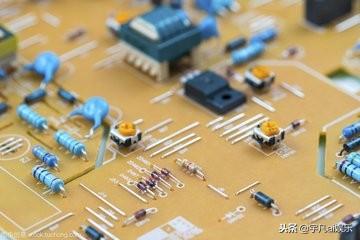
Date:2017-11-27 Categories:Industry News Hits:461

PPTC (positive temperature coefficient) device is a reliable and economical solution to provide current overload protection for computers and related devices. Since the device has various sizes and power ranges, circuit designers can choose the most appropriate style to meet the requirements of circuit design and USB specification.
The current USB technology enables a variety of self-identified external devices to connect to the computer and load their own drivers to run new devices. The general plug and play device needs USB interface with power supply for data transmission and power supply. When there is a short circuit or a damaged device is connected, such as when the damaged cable or connector is inserted into the USB interface, the USB hub and host device must be effectively protected. Because this kind of situation often occurs in the use of PC or hub, the USB specification requires that the device should be protected against multiple current overload, especially that "pptcs" is an ideal protection technology.
USB devices can be classified as hubs that provide additional connection points to USB, or function modules that provide other functions to the system (e.g., CNC joystick). The hub device can be further divided into bus power supply and self power supply.
The bus power hub obtains the power supply required by all internal function modules and subsequent interfaces from the power pin of the USB connector. The hub can obtain up to 500 mA from the front-end device. Each external interface of the active bus hub can obtain up to 100 mA current, with up to 4 external interfaces.
The power supply of self powered hub for internal function and subsequent interface is not from USB interface, although the former USB interface can provide 100 mA current and enable the interface to operate normally when the hub is powered off. The hub must be able to supply up to 500 mA on all subsequent stage connections.
The requirements of USB specification for current overload protection are as follows:
*For safety, the host and self powered hubs must provide current overload protection.
*The hub must be equipped with current overload detection and be able to transmit the detection results to USB software.
*If the overall current exceeds the preset value due to the power supply of a batch of subsequent interfaces, the current overload protection circuit must be able to eliminate or reduce the power supply of all affected subsequent interfaces.
*The current overload trip point must not exceed 5.0 amperes and must be higher than the maximum allowable interface current so that transient current (e.g., when power is on or dynamically coupled or reconfigured) does not cause the current overload protector to trip.
USB specification requires two current protection schemes: independent or collective. Using PolySwitch to protect independent interface can provide effective protection design for subsequent power connection. When an interface fails, the PolySwitch device of the interface trips, and the adjacent interface can still operate normally. Independent interface protection also allows designers to choose lighter and more responsive devices.
Figure 1 shows the basic circuit of independent interface protection and current overload report circuit. Under normal conditions, the subsequent equipment voltage (VA) of PolySwitch device is about 5V. In case of failure, the VA will drop below 1V.
In order to reduce EMI radiation on USB cable, ferrite magnetic ring is usually connected in series at the VCC pin. The series impedance of magnetic ring and RF damping are important basis. The choice of "conductor plus magnetic ring" configuration is mainly due to its low DC series connection impedance. The "capacitor output" layout, which is connected in series with the magnetic ring and then paralleled with the output capacitor, is the ideal layout to make the follow-up interface play a good current characteristics.